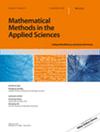Solutions to Two Problems on a Class of Sequences Converging to the Number e
IF 1.8
3区 数学
Q1 MATHEMATICS, APPLIED
引用次数: 0
Abstract
We solve two problems concerning the family of real sequences , where , considerably improving and complementing the results in the literature. Namely, we find all the values of the parameter such that , for every , and find all the values of the parameter such that the sequence is strictly increasing on the whole domain (i.e., on the set ). An interesting and highly nontrivial auxiliary result about the behavior of a real function is obtained.
一类收敛于数e的数列上两个问题的解
我们解决了关于实数列族的两个问题1 + 1 n n1 + α n, n∈n $$ {a}_n^{\left(\alpha \right)}={\left(1+\frac{1}{n}\right)}^n\left(1+\frac{\alpha }{n}\right),\kern0.3em n\in \mathbb{N} $$,其中α∈[0,∞)$$ \alpha \in \left[0,\infty \right) $$,大大改进和补充了文献中的结果。即,我们找到参数α $$ \alpha $$的所有值,使得n (α) <E $$ {a}_n^{\left(\alpha \right)}<e $$,对于每一个n∈n $$ n\in \mathbb{N} $$,并求出所有的参数值,使得序列an (α) $$ {a}_n^{\left(\alpha \right)} $$在整个定义域上严格递增(即,在集合($$ \mathbb{N} $$)上。得到了关于实函数性质的一个有趣的、高度非平凡的辅助结果。
本文章由计算机程序翻译,如有差异,请以英文原文为准。
求助全文
约1分钟内获得全文
求助全文
来源期刊
CiteScore
4.90
自引率
6.90%
发文量
798
审稿时长
6 months
期刊介绍:
Mathematical Methods in the Applied Sciences publishes papers dealing with new mathematical methods for the consideration of linear and non-linear, direct and inverse problems for physical relevant processes over time- and space- varying media under certain initial, boundary, transition conditions etc. Papers dealing with biomathematical content, population dynamics and network problems are most welcome.
Mathematical Methods in the Applied Sciences is an interdisciplinary journal: therefore, all manuscripts must be written to be accessible to a broad scientific but mathematically advanced audience. All papers must contain carefully written introduction and conclusion sections, which should include a clear exposition of the underlying scientific problem, a summary of the mathematical results and the tools used in deriving the results. Furthermore, the scientific importance of the manuscript and its conclusions should be made clear. Papers dealing with numerical processes or which contain only the application of well established methods will not be accepted.
Because of the broad scope of the journal, authors should minimize the use of technical jargon from their subfield in order to increase the accessibility of their paper and appeal to a wider readership. If technical terms are necessary, authors should define them clearly so that the main ideas are understandable also to readers not working in the same subfield.

 求助内容:
求助内容: 应助结果提醒方式:
应助结果提醒方式:


